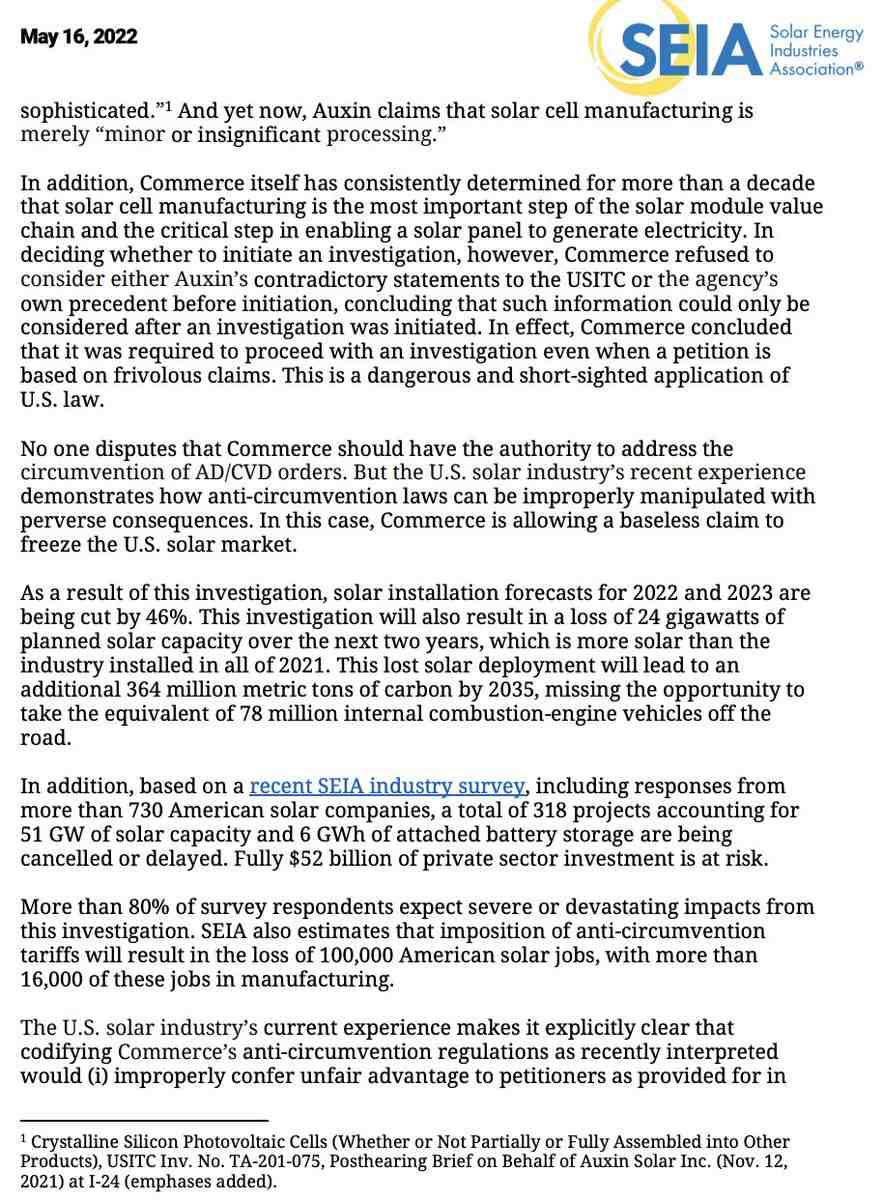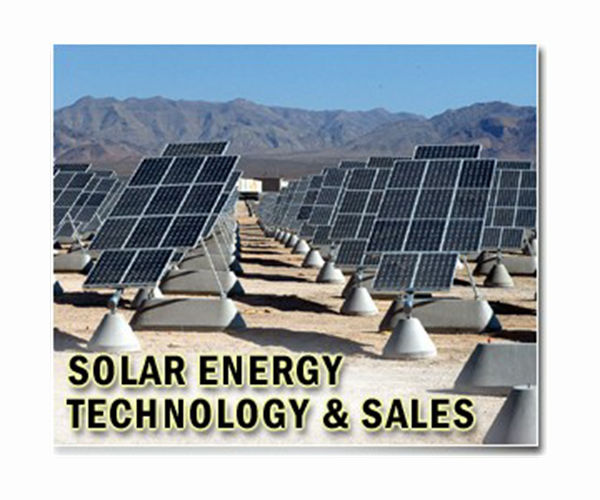Electricity is an essential component of modern life that drives homes, businesses and industry. It is critical to the functioning of large sectors of the economy, including hospitals, schools, public transport systems, and the defense industrial base. Even isolated interruptions in the electrical service can have catastrophic health and economic consequences. A robust and reliable electric power system is therefore not only a basic human necessity, but is also critical to national security and national defense.
Multiple factors threaten the U.S.’s ability to provide enough power generation to serve expected customer demand. These factors include disruptions to energy markets caused by Russia’s invasion of Ukraine and extreme weather events exacerbated by climate change. For example, in parts of the country, drought conditions coupled with heat waves cause simultaneously projected power supply shortages and record electricity demand. As a result, the Federal Energy Regulatory Commission and the North American Electric Reliability Corporation have both warned of short-term electricity reliability concerns in their recent summer reliability assessments.
To ensure the adequacy of electrical resources, utilities and network operators need to engage in advance planning to build new capacity now to serve expected customer demand. Solar energy is one of the fastest growing sources of the new generation of electricity in the United States. Utilities and grid operators are increasingly relying on new solar installations to ensure that there are sufficient resources on the grid to maintain reliable service. Supplements of solar capacity and battery were expected to account for over half of the new electricity sector capacity in 2022 and 2023. The unavailability of solar cells and modules threatens the planned additions, which in turn threatens the availability of sufficient power generation capacity to expect customers to meet your demand. Electricity produced by solar energy is also critical to reducing our dependence on electricity produced by burning fossil fuels, which is driving climate change. The Department of Defense has recognized climate change as a threat to our national security.
In recent years, the vast majority of solar modules installed in the United States have been imported, with those from Southeast Asia accounting for about three-quarters of imported modules by 2020. sufficient quantities to guarantee the solar power additions needed to achieve our climate and clean energy goals, to guarantee the adequacy of the electricity grid resource and to help combat rising energy prices. This acute shortage of solar modules and module components has suddenly jeopardized short-term solar capacity additions that could otherwise have the potential to help ensure sufficient power generation to meet customer demand. About half of the home installation of solar modules, which is planned for next year, is currently at risk due to insufficient supply. Across the country, solar projects are being phased out or canceled.
The federal government is working with the private sector to promote the expansion of home solar production capacity, including our capacity to manufacture modules and other inputs in the solar supply chain, but building this capacity will take time. Immediate action is needed to ensure, in the meantime, that the United States has access to an adequate supply of solar modules to help meet our power generation needs.
NOW, DUURAL, I, JOSEPH R. BIDEN JR., President of the United States, through the authority we have through the Constitution and the laws of the United States of America, including Section 318 (a) of Tariff Act of 1930, as amended, 19 U.S.C. 1318 (a), thereby declaring an emergency to exist with respect to the threats to the availability of sufficient power generation capacity to meet expected customer demand. In accordance with this declaration, I direct the following:
Section 1. Emergency Authority. (a) In order to give additional authority to the Secretary of Commerce (Secretary) to respond to the emergency declared here, the authority is invoked and made available under Section 1318 (a) of Title 19, US Code, under his terms, the Secretary.
(b) To provide relief from the emergency, the Secretary shall consider appropriate action under section 1318 (a) of Title 19, United States Code, to permit up to 24 months after the date of this proclamation or until the emergency declared here, concluded, whichever occurs first, under such regulations and under such conditions as the Secretary may prescribe, the importation, free from the collection of duties and estimated duties, if applicable, under Sections 1671, 1673, 1675, and 1677j of the Title 19, United States Code, of certain solar cells and modules, exported from the Kingdom of Cambodia, Malaysia, the Kingdom of Thailand, the Socialist Republic of Vietnam, and not already subject to an anti-dumping or anti-dumping order as of the date of this proclamation, and for in the event of an emergency, temporarily extend the time required for the execution of any act relating to such importers.
(c) The Secretary shall consult with the Secretary of the Treasury and the Secretary of Homeland Security, or their designees, before exercising, as called upon and provided under this Proclamation, any of the authorities referred to in Section 1318 (a) of the Title. determined. 19, USA Code.
Sec. 2. General Provisions. (a) Nothing in this proclamation shall be construed to affect or otherwise affect:
(i) the authority conferred by law on an executive department or agency, or the head thereof; or
(ii) the functions of the Director of the Office of Management and Budget concerning budgetary, administrative or legislative proposals.
(b) This proclamation shall be consistent with the applicable law and shall be subject to the availability of payments.
(c) This Proclamation is not intended to, and does not constitute a right or benefit, substantial or procedural, enforceable in the law or in the equity of any party against the United States, its departments, agencies or entities, its officers, employees, or agents , or any other person.
TO TESTIFY IT, I have here my hand on this sixth day of June, in the year of our Lord two thousand and twenty-two, and of the independence of the United States of America the two hundred and sixty-six.
JOSEPH R. BIDEN JR.
The network hosts 14 live hours a day of business programming in North America (weekdays from 5:00 a.m. – 7:00 p.m. ET) on CNBC’s global headquarters in Englewood Cliffs, N.J. produced and includes reports from CNBC News offices worldwide.
What is squawk service?

Market Squawk has taken the concept of financial audio news services or squawks and made it more accessible to traders. Some retailers need that in-depth, blow-by-blow feed of headlines. To see also : How does solar energy produced ?. For others, it’s about gaining quick access to news that affects your position.
What is squawk Wall Street? Squawk on the Road: New York Stock Exchange Market News.
What does squawk mean in business?
A squawk box is a term for an intercom speaker used by analysts or traders of a brokerage firm on trading surfaces or writing. Squawk boxes can be found in investment banks, along with stock brokers, and on exchange floors. Read also : How solar energy is converted into electricity ppt ?. A squawk box allows a firm of analysts and traders to communicate with the company’s brokers.
Why is it called squawk box?
The program title derives from a term used by investment banks and stock brokers to communicate a permanent voice circuit or intercom using stock deals or sales priorities; it can also refer to the beak of a bird, like a peacock, which is the CNBC logo.
Where is CNBC Squawk Box?
“Squawk on the Street” has its headquarters live on the floor of the New York Stock Exchange.
Where does Squawk Box broadcast from?
CNBC’s Morning Show Pre-Market Show “Squawk Box” is back on the first floor of the Nasdaq MarketSite in Times Square on Wednesday, October 30, 2019. “Squawk Box” first moved to Times Square in early 2017, studio broadcast B on the second floor.
Who owns Squawk Box?
Andrew Ross Sorkin is co-anchor of “Squawk Box” (M-F, 6 AM-9AM ET), CNBC’s signature morning program. Sorkin is also a financial columnist for The New York Times and the editor-at-large of DealBook, a news site he founded published by The Times.
What is audio squawk?
Audio Squawk is a fast, timely audio news broadcast that brings you the most important stock. News. Benzinga’s news desk monitors the news so you never miss a headline. Listen to a sample. Real time from 6am to 6pm.
What is squawk equity?
Squawk Equity gives you alerts about stocks and the market as a whole, while Squawk Options only alerts you to options activity. (You can see most of the alarms in this squawk in the UOA add on workspace)
What’s in a squawk box?
What’s in my Squawk Box? It’s a surprise! Each month, you will receive 4-6 items in the Little, Middle, and Big Birdie Boxes, which contain parrot-safe toys, treats, and a few different items. Jumbo Birdie boxes come with 3 items including 1 extra large toy, 1 large toy and 1 candy.
How Old Is Cramer?

What is Jim Cramer’s net worth? Wealth. According to Money, Inc., Jim Cramer has an estimated net worth of $ 100 million.
How old is Kramer on msnbc?
| Jim Cramer | |
|---|---|
| Born | James Joseph Cramer February 10, 1955 Wyndmoor, Pennsylvania, U.S.A. |
| Education | Harvard University (AB, JD) |
| Profession | Television Personality, Author |
| Year active | 1980s |
How much is Jim Cramer’s net worth?
Is Jim Cramer rich? Jim Cramer has a net worth of about $ 100 million.
What is Kramer’s annual salary?
He is best known for presenting CNBC show Jim Cramer’s “Mad Money” Jim is also the co-founder of TheStreet.com. Cramer earns an annual salary of 5 million for his work.
What is Jim Cramer’s real name?
Jim Cramer, by name of James Joseph Cramer, (born February 10, 1955, Wyndmoor, Pennsylvania, US), American television personality known for his investment advisory show Mad Money (2005-).
Where does Squawk Box broadcast from?

CNBC’s Morning Show Pre-Market Show “Squawk Box” returns to the first floor of the Nasdaq MarketSite in Times Square on Wednesday, October 30, 2019. “Squawk Box” first moved to Times Square in early 2017, broadcast by Studio B on the second floor.
What time is Squawk Box Loft? Squawk Box (@SquawkCNBC) / Twitter. Start your morning with Joe Kernen, Becky Quick, and Andrew Ross Sorkin – Monday through Friday from 6-9a ET.
Where does CNBC Squawk Box broadcast from?
| Squawk Box | |
|---|---|
| Production sites | Fort Lee, NJ (August 7, 1995 – October 10, 2003) Englewood Cliffs, NJ (October 13, 2003 – January 6, 2015) Time-Life Building, New York City (January 7, 2015 – December 30, 2016) NASDAQ MarketSite, New York City (January 3, 2017 – Present) |
| Running time | 180 minutes (3 hours) |
| Release |
Where can I watch CNBC?

You can watch CNBC without cable on DirecTV Stream, Sling News Extra, Hulu, Fubo, Fubo Elite, YouTube TV, Spectrum TV or Xfinity Choice TV.
How can I watch CNBC for free? WatchNewsLive.net, like NewsLiveOn.com, allows you to watch CNBC for free.
Is CNBC available on Hulu?
Watch CNBC Network Online | Hulu (Free Trial) Watch CNBC with every Hulu plan starting at $ 6.99 / month. New subscribers only. No hidden costs, equipment rentals or installation appointments.
Does Hulu TV have CNBC?
You can watch CNBC without cable on Sling News Extra, Hulu, DirecTV Stream, Fubo, Fubo Elite, YouTube TV, Spectrum TV or Xfinity Choice TV.
How can I watch CNBC in USA?
How to watch CNBC without cable
- fuboTV.
- Sling TV.
- Hulu with Live TV.
- YouTube TV.
- AT&T TV Elo.
How can I watch free CNBC?
Can I watch CNBC for free? No You have to pay for a cable subscription, a CNBC Pro subscription or a streaming service like Sling TV, Hulu Live TV or Youtube TV.
Can I watch CNBC on the Internet?
Live streaming of CNBC is available on Hulu Live TV. This service offers a ton of live TV channels.
How can I watch CNBC online for free?
WatchNewsLive.net, like NewsLiveOn.com, allows you to watch CNBC for free. That is, you will be subject to all the ads that you would see on any other service, and do so in a legally gray area.
What does it cost to stream CNBC?
| ★ Best choice | |
|---|---|
| DIRECTV STREAM | Sling TV |
| News Extra $ 6 | |
| $ 69.99 / Mo. 5-Day Free Test | $ 41 / Mo. Chalk 50% OFF |
| $ 69.99 / Mount 5-Day Free Trial directv.com/stream | $ 41 / month Get 50% OFF sling.com |
Can you watch CNBC live on YouTube?
Watch CNBC on YouTube TV for $ 64.99 / mo for 85 Live Channels. No contracts or hidden costs.
How can I watch CNBC channel?
You can watch CNBC live without cable on one of these streaming services: Sling, DirecTV Stream, Fubo TV, Hulu or YouTube TV.
What app can i watch CNBC?
You can watch CNBC live or watch on demand through a number of TV apps including Apple TV, Roku, Fire TV and Samsung TV. All you need is an account with your cable or satellite provider or through a subscription to Youtube or Hulu.
How much does CNBC cost?
| ★ Best choice | |
|---|---|
| DIRECTV STREAM | Sling TV |
| News Extra $ 6 | |
| $ 69.99 / Mo. 5-Day Free Test | $ 41 / Mo. Chalk $ 10 OFF |
| $ 69.99 / Mount 5-Day Free Trial directv.com/stream | $ 41 / month Kritt $ 10 OFF sling.com |
Where can I watch CNBC live?
Watch CNBC on YouTubeTV Youtube TV supports Android, iOS, Apple TV, Fire TV, Chromecast, and more. The YouTube TV app is also back on Roku devices after resolving a dispute between the two companies.


